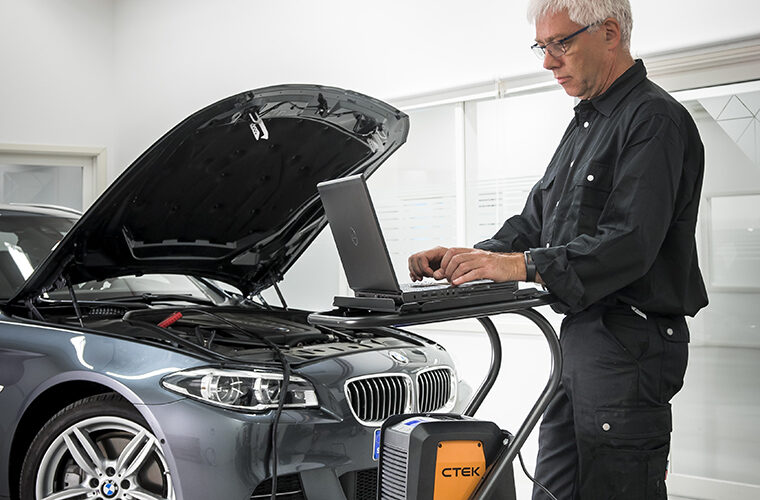As the owner of a workshop, it is crucial to consider various factors when vehicles come in for service or diagnostics.
These factors become even more important when taking into account a recent European survey carried out by battery management specialist CTEK, where over 700 workshop employees participated.
Almost 20 percent of the technicians surveyed said that out of ten vehicles arriving at their workshop, between three and five have a battery problem – up to 50 percent.
Recent research conducted by a battery manufacturer has unveiled a surprising insight: more than 85 percent of warranty claims are not due to battery faults, but rather a lack of charge or inadequate maintenance by customers, leading to battery sulfation.
During the servicing process, it has been observed that a vehicle’s battery can lose up to 10 percent of its charge while in the workshop. It is worth noting that battery charge levels can significantly decrease in just a few days of non-use, reaching dangerously low levels.
It is crucial to emphasise that most battery problems are not caused by faulty batteries themselves but rather stem from improper charging practices. These factors mean that it’s more important than ever before to deliver dedicated battery support to each and every vehicle entering the workshop, using a safe and stable power supply.
To assist professional workshops in optimising their battery service and diagnostic procedures, CTEK offers the following top tips:
Test the battery and report condition to the customer
Once the battery test is completed, the results are communicated to the customer. If the opportunity is there, connect a charger to the vehicle when in for work. It’s considered good practice to connect a charger to the vehicle while in for service or diagnostic work.
If carrying out diagnostic or reprogramming work – connect a BSU
The purpose of connecting a battery support unit during diagnostic or reprogramming work is to ensure a stable power source for the vehicle’s electrical system, preventing ghost fault codes from being generated by low battery voltage.
Diagnostic tests and reprogramming procedures can put a strain on the battery, especially if they require extended periods of time. By connecting a battery support unit, it helps maintain a consistent power supply and prevents the battery from being drained during the process.
Don’t use a jump start pack for battery support work – always use a battery support unit
Jump start packs are primarily designed for emergency situations to start a vehicle with a flat battery. A dedicated Battery Support Unit (BSU) is designed specifically for battery maintenance and support tasks. BSUs typically provide a continuous and controlled power supply, which is important for tasks that require a consistent voltage supply, such as diagnostic procedures or reprogramming work.
Connecting a charger/power supply unit to the vehicle minimises the amount of error codes.
Your diagnostic equipment will not work properly without the correct voltage supplied by a power supply unit. A stable and sufficient power supply can help prevent voltage fluctuations or drops that may trigger false or ghost error codes. Insufficient or unstable voltage can affect the accuracy and reliability of diagnostic readings, leading to incorrect results or incomplete diagnoses.
By following these top tips, workshops can enhance their battery service and diagnostic procedures, ensuring optimal performance and reducing the risk of breakdown incidents caused by battery-related issues.







